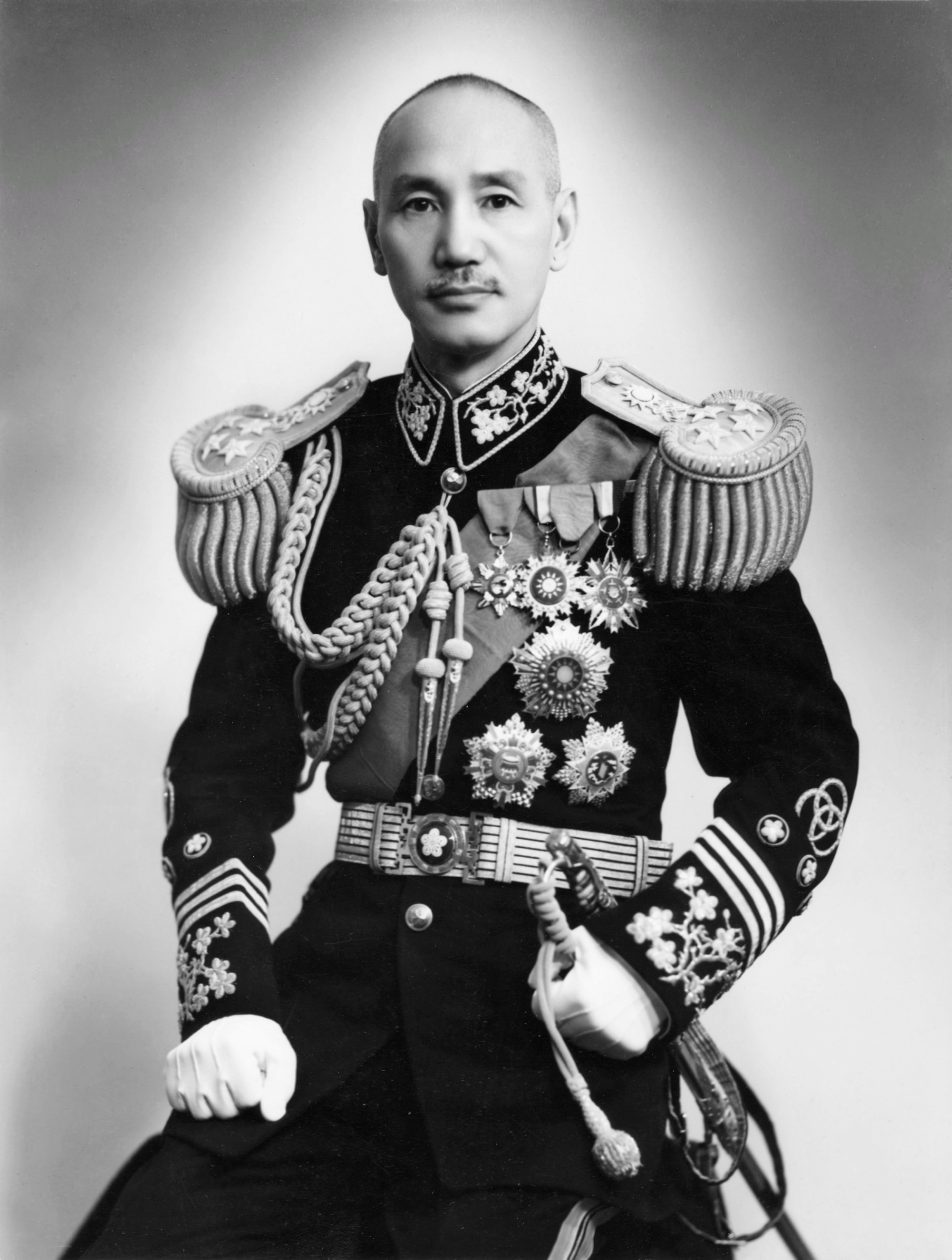Chiang Kai-shek, << jyahng ky SHEHK >> (1887-1975), was the political and military leader of the Nationalist Chinese government on Taiwan from 1949 until 1975. Taiwan lies off China’s coast in the South China Sea. Chiang first rose to power in China when he took command of the Kuomintang Party in the 1920’s. This was the Nationalist Party that had overthrown the Manchu (Qing) dynasty and proclaimed a republic in 1912. Chiang was the decisive authority in China from the mid-1920’s until 1949, when Communists took control. He then fled to Taiwan and established his government there.

Chiang was born on Oct. 31, 1887, in Zhejiang Province. He received a military education in China and in Tokyo, Japan. In Tokyo, he met Sun Yat-sen, the Chinese revolutionary leader, and joined Sun’s revolutionary organization. Sun sent Chiang to the Soviet Union in 1923. When Chiang returned to China, Sun appointed him president of the Whampoa Military Academy. Sun died in 1925, and the next year Chiang took command of the Nationalist Army.
Nationalist victory.
In 1926, Nationalist forces, aided by Communist organizers, left Guangzhou on a campaign against warlords in the north. The warlords were defeated, and the Nationalists became the strongest force in China. Soviet advisers tried but failed to seize political power at Hankou and Shanghai. In 1927, Chiang split with the Communists and expelled the Soviets from China. He then established a capital at Nanjing. That year, he married Soong Mei-ling (see Chiang Soong Mei-ling). He later became a Christian.
The National Government of China was created in 1928. From 1928 to 1937, Chiang improved economic and political institutions in China. However, the Japanese military and Chinese Communists continually sabotaged his regime.
In 1936, Chiang united the Nationalists with the Communists against the Japanese. The Japanese attack on China in 1937 allowed Chiang to assume full military power in this union as generalissimo. After the Japanese captured Nanjing later that year, he made the city of Chongqing his wartime capital. Chiang led China to victory in 1945.
Communist triumph.
Near the end of World War II, when Japanese surrender became inevitable, fighting between the Nationalists and the Communists resumed. Chiang issued a new constitution and called for a popular election. In 1948, Chiang was elected president of China. Li Tsung-jen became vice president. But Chiang failed to ensure political stability. The Communists were winning the civil war. Chiang’s resignation and Li’s assumption of the presidency did not save the situation. By the end of 1949, the Communists had driven Chiang and his armies from the Chinese mainland to Taiwan. See China (Civil war).
On Taiwan, Chiang took full military and civil authority. He established Taipei as the capital of his government. Chiang was reelected president in 1954, 1960, 1966, and 1972. He died on April 5, 1975.
